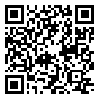Volume 20, Issue 2 (2017)
mjms 2017, 20(2): 23-36 |
Back to browse issues page
Download citation:
BibTeX | RIS | EndNote | Medlars | ProCite | Reference Manager | RefWorks
Send citation to:



BibTeX | RIS | EndNote | Medlars | ProCite | Reference Manager | RefWorks
Send citation to:
Abdolmaleki N, Javani Jouni F, Abdolmaleki P, abdolmaleki Z. Assessment of anticancer properties of Rosmarinus officinalis L extract and gamma rays on cell viability of MCF-7, SKBR3, and HU02 cell lines. mjms 2017; 20 (2) :23-36
URL: http://mjms.modares.ac.ir/article-30-2833-en.html
URL: http://mjms.modares.ac.ir/article-30-2833-en.html
1- Department of Biophysics, Islamic Azad University, Tehran North Branch, Tehran, Iran
2- Department of Microbiology, Islamic Azad University, Tehran North Branch, Tehran, Iran
3- Department of Biophysics, Faculty of Biological Sciences, Tarbiat Modares University, Tehran, Iran
4- Department of Pharmacology, Faculty of Veterinary Medicine, Islamic Azad University, Karaj Branch, Karaj, Iran
2- Department of Microbiology, Islamic Azad University, Tehran North Branch, Tehran, Iran
3- Department of Biophysics, Faculty of Biological Sciences, Tarbiat Modares University, Tehran, Iran
4- Department of Pharmacology, Faculty of Veterinary Medicine, Islamic Azad University, Karaj Branch, Karaj, Iran
Abstract: (10373 Views)
Objective: Despite significant advances in radiation therapy and cancer treatments in the past 30 years, resistance to chemotherapy is a major obstacle in the recovery of patients with cancer. Resistance to chemotherapy drugs inhibits the recovery process. This study aims to evaluate the anticancer activity of the methanolic extract of rosemary alone and in conjunction with gamma rays on growth inhibition of MCF-7,SKBR3 and Huo2 cell lines.
Methods: We examined cytotoxicity of different concentrations (1, 5, 10, 50, 100, 500 μg/ml) of rosemary extract and various doses of gamma rays (1.5, 3, and 7.5 Gy) on MCF-7, SKBR3, and fibroblast (HU02) cell lines. All three cell lines were obtained from the Iranian Biological and Genetics Reserve Center. The cell lines were grown in DMEM supplemented with 10% FBS, 1% penicillin and streptomycin. The cells were allowed to incubate at 37ºC in an atmosphere that contained 5% CO2 and 100% humidity. The standard MTT assay was performed to estimate cell viability after treatment with gamma rays and rosemary extract.
Results: The results of the MTT assay showed that rosemary extract had time- and concentration-dependent anticancer activities on the MCF-7 and SKBR3 cell lines (p<0.01). Rosemary extract had no remarkable cytotoxicity on the normal HU02 cell line. Gamma rays along with rosemary extract had more cytotoxic activity in a time-dependent manner on viability in the cancer call lines (p<0.03).
Conclusion: Our results, along with results from other studies, have suggested that rosemary extract is a potential candidate, either alone at pre-determined doses or in combination with gamma rays, for the treatment of chemotherapy resistant breast cancer.
Methods: We examined cytotoxicity of different concentrations (1, 5, 10, 50, 100, 500 μg/ml) of rosemary extract and various doses of gamma rays (1.5, 3, and 7.5 Gy) on MCF-7, SKBR3, and fibroblast (HU02) cell lines. All three cell lines were obtained from the Iranian Biological and Genetics Reserve Center. The cell lines were grown in DMEM supplemented with 10% FBS, 1% penicillin and streptomycin. The cells were allowed to incubate at 37ºC in an atmosphere that contained 5% CO2 and 100% humidity. The standard MTT assay was performed to estimate cell viability after treatment with gamma rays and rosemary extract.
Results: The results of the MTT assay showed that rosemary extract had time- and concentration-dependent anticancer activities on the MCF-7 and SKBR3 cell lines (p<0.01). Rosemary extract had no remarkable cytotoxicity on the normal HU02 cell line. Gamma rays along with rosemary extract had more cytotoxic activity in a time-dependent manner on viability in the cancer call lines (p<0.03).
Conclusion: Our results, along with results from other studies, have suggested that rosemary extract is a potential candidate, either alone at pre-determined doses or in combination with gamma rays, for the treatment of chemotherapy resistant breast cancer.
Article Type: Original Manuscipt |
Subject:
Bioelectromagnetics
Received: 2017/06/17 | Accepted: 2017/07/23
Received: 2017/06/17 | Accepted: 2017/07/23
| Rights and permissions | |
 |
This work is licensed under a Creative Commons Attribution-NonCommercial 4.0 International License. |







